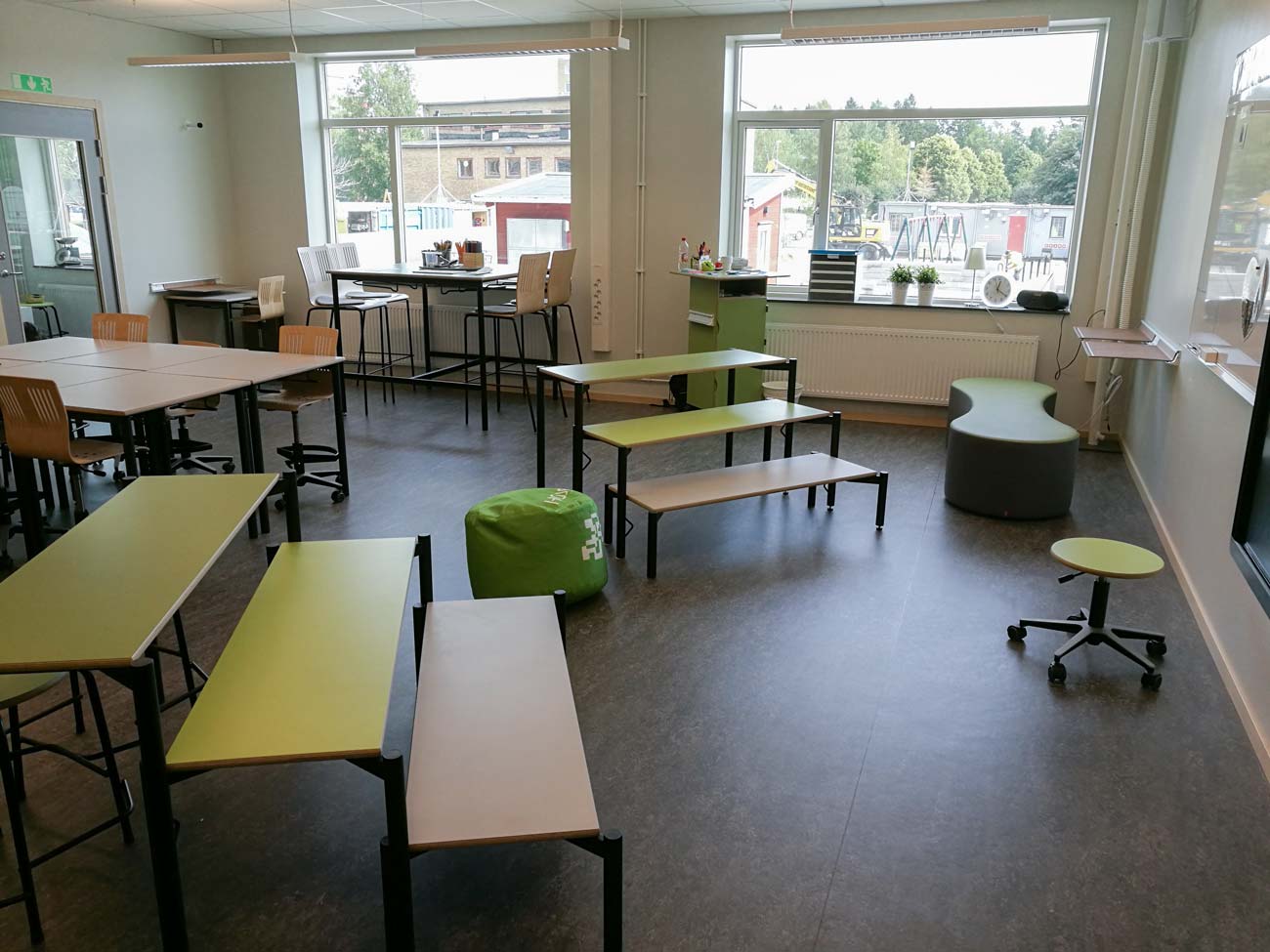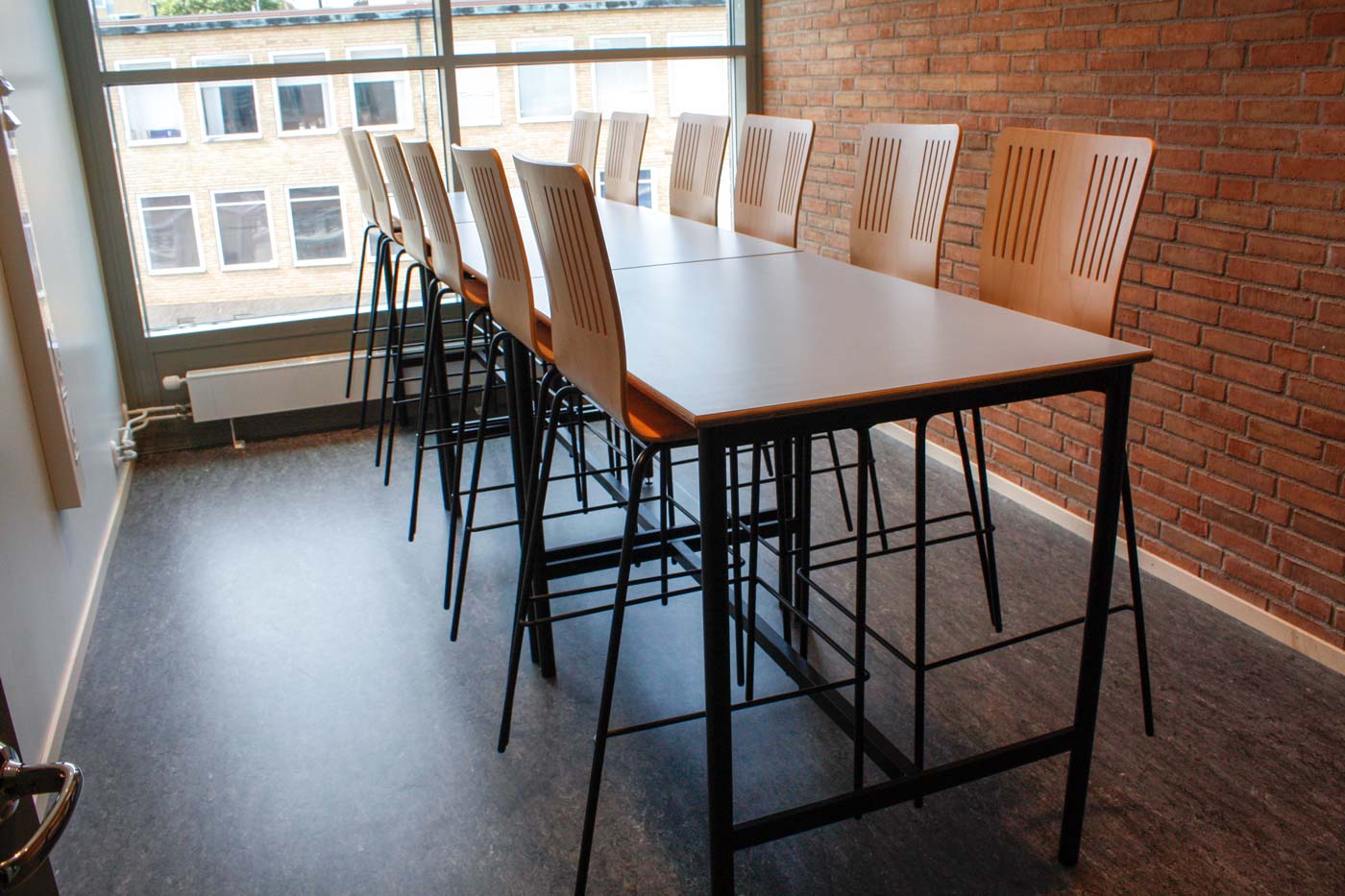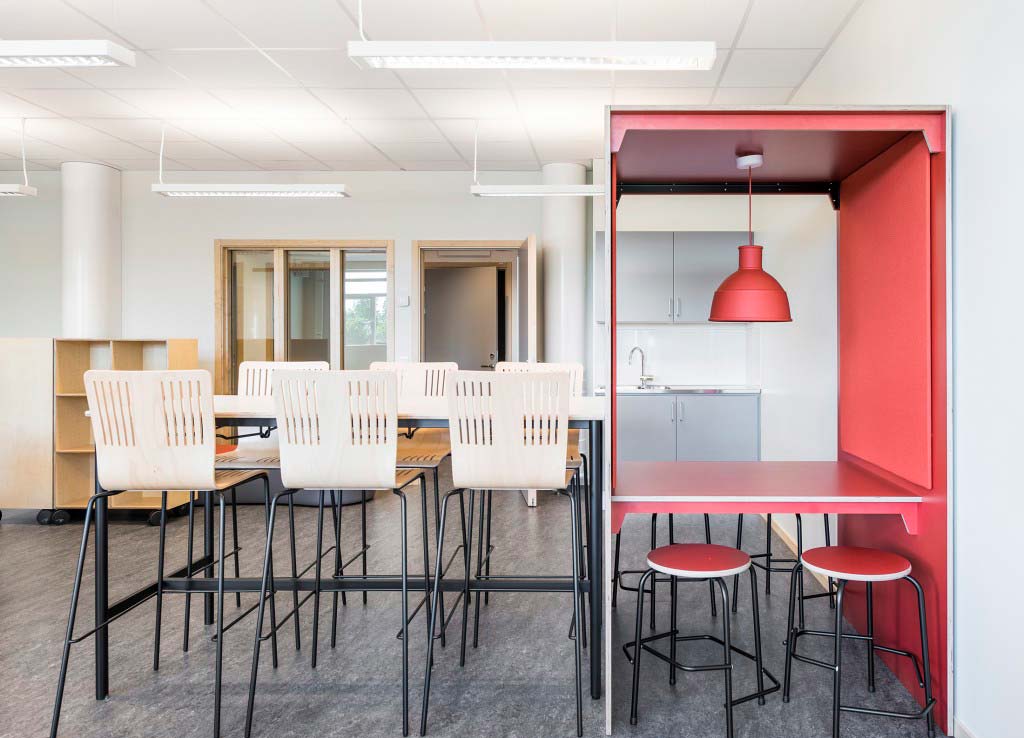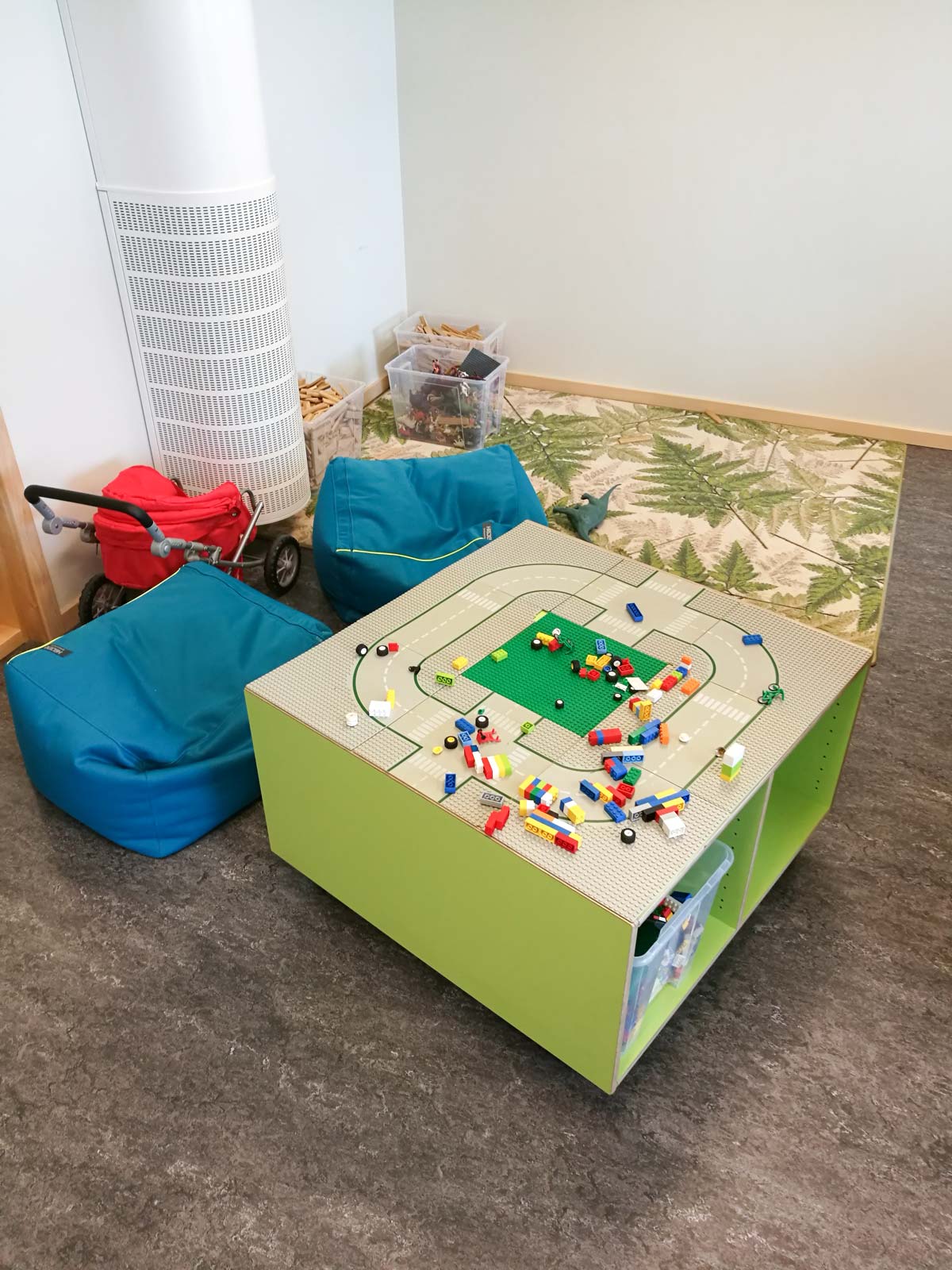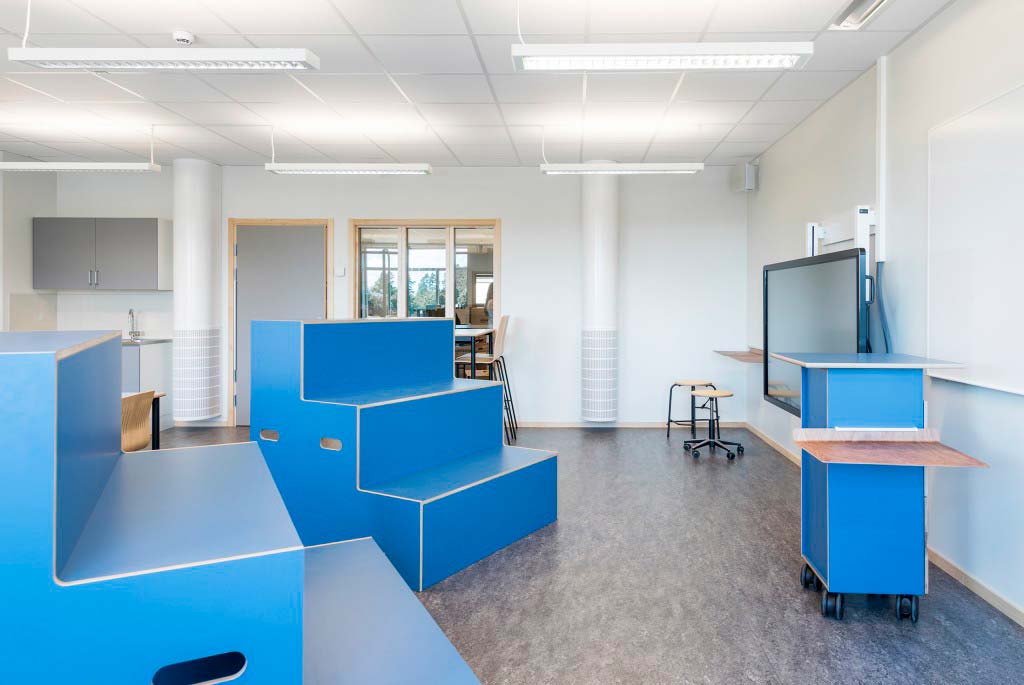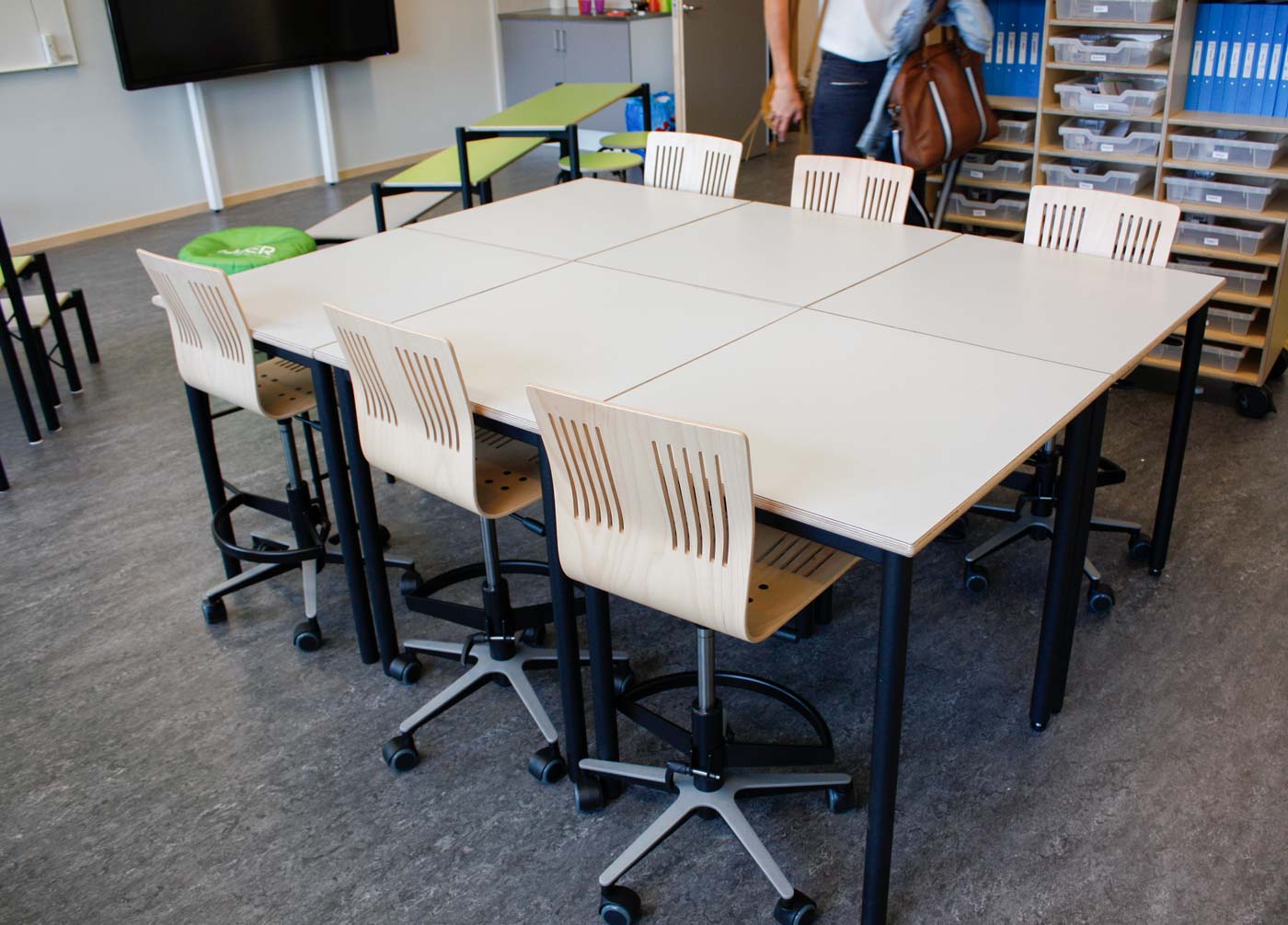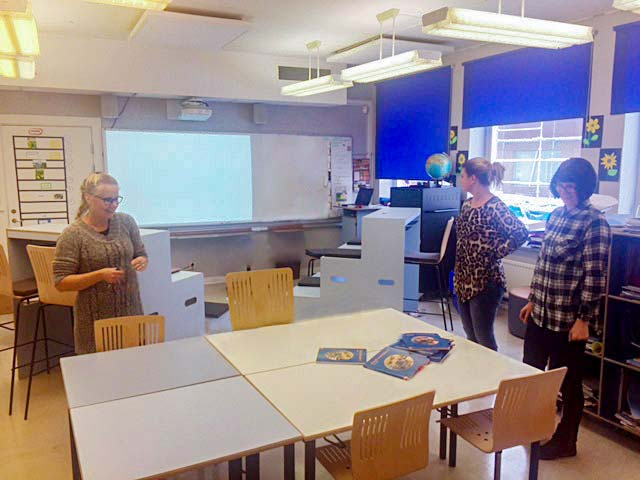Activating learning spaces in all class rooms
Runnerydskolan
Background
Nässjö community in Sweden received the first delivery of school furniture in the summer of 2017 for the initial part of the new Runnerydskolan, which is to be completely ready in the summer of 2018. The school project is a combination of an establishment of a new wing and of the old school, which is to be renovated. In total, the school will accommodate 700 pupils from 6 to 12 years.
Challenge
The new school is intended to work as a pilot project for coming schools projects in the community, which is the reason why many new initiatives were tested and evaluated during the initial phase.
From the beginning of the project, the school management was aware that there could be challenges in order to carry out changes of the pedagogical mindset without the support of the staff. Thus the teachers were involved in the process of change to ensure ownership. At the same time, the changes should be carried out with respect for cultural differences, teachers and pupils as well as for their mutual relationships. The staff group suggested the following words, which are to outline the future learning spaces: lust, joy, community, inquisitiveness, positive energy, equality, development, curiosity, sense of responsibility, safety, possibilities, encouragement, honesty, respect, friendship and diversity.
The initial work resulted in a wish to create a school, that can ”give all children and pupils the same qualifications to succeed as well at strive after an improved pedagogical framework”. Furthermore, there was a desire to create an environment, which encourages the pupils’ development and improve their learning skills, as well at a lifelong desire to learn.
In order to ensure, that the activating learning space concept was the right way to go, the school decided to test the concept in a challenging class.
Solution
The activating learning concept is based on the fact, that there must be room for everybody in a differentiated interior design. At Runnerydskolan, it was important that the interior design in each classroom fits the age group of the pupils, as the traditional class division had to be maintained.
All classrooms have been furnished with a presentation zone in front of the board by using Step learning steps or Amfi Staircases. At the same time, places for contemplation and concentrated work are integrated either in the form of a Focus contemplation both or single workstations dispersed in the classroom. In order to encourage teamwork and group sessions, a large group table is placed in the center of the room and a high table at one side. At the same time, a creative corner and soft furniture is included.
For more flexibility Zap Boards are integrated several places in the classroom. Various work heights are provided, on a carpet for the smaller pupils, in a standard sitting height and at a high table. Furthermore, the school chairs are fitted with height adjustment in order to adapt for different pupils.
The activating learning landscape
“Sedentary working in the school system results in sickness and bad results. A New report shows, that 68% of Swedish school children are physically inactive” (DN Debatt 5/4 2017). The activating learning landscape is based on an entirely new kind of spatiality and mobility in the interior school design. We define mobility on a wider scale and it is not obtained only by fitting the chairs and tables with wheels, but also by offering many different sitting/standing positions. We usually explain this by saying:
“The best sitting position is the next position”
As a natural consequence, the pupils are offered the possibility to move around during the lesson and because it happens continually, there is no interruption of the teaching.
Architect, Bente Boddum Jensen
Additional information:
Plan drawing of the school project
Tranark AB http://www.tranark.se/nassjo-runnerydsskolan
The result
The differentiated classroom concept allows for the pupils to change places regularly – also during lessons. The pupils that need to interact with others choose the team zone, but they have the possibility to change place later on without influencing the rest of the fellow pupils. They will find a new place, where they can continue working with a given assignment. This also offers the pupils that need to move around more than others a chance to recharge for the next task and this without disturbing fellow pupils.
In general, the school is positive towards the advantages they have gained with the new classroom concept. Headmaster Torbjörn Stubbe says that the main challenge for the school has been that there are more students than the spaces have been designed for.
“The concept is built on the principle that there should be seating options for all pupils, and when you go from 20-22 pupils per class to 27, you’ve got a problem. When there are more pupils than the room has been designed for, you do not obtain the dynamic of the concept, since all the seats in the room will be taken. The result is that the teacher needs to be in charge and move pupils simultaneously and consequently you lose the natural flow the concept is built upon. However, this problem is not caused by the furnishing or the concept, but due to the fact that we are too many.”
Before the installation of the test-room, some teachers were worried, that it would be disturbing to work in the new learning environment. This however did not turn out to be the case. On the contrary, some of the teachers remarked that there was more harmony in the room and that the noise level had been reduced.
Although, the feedback has over all been positive, there are still some teachers that have not embraced the advantages of the new concept and have duly refurbished the room back to a traditional setting in which they are more comfortable. This is a challenge since the concept can then not be used to its full advantage. At the same time, it is important that the teachers work in an environment that is suitable for them.
One of the favorite work stations have been the bar tables, since the pupils are seated higher and the teachers do not have to bend or kneel down to get on a face-to-face level with the pupil. Over the years, Torbjörn has seen many work injuries among teachers due to bad work positions and the bar tables have eliminated that problem. However, the bar tables have also been a challenge in some of the reception classes, where the teachers feel a need to help the small children up on the chair, or should they drop something, a need to help them pick it up. Some teachers find this very frustrating. However, other teachers do not see this as a problem at all and instead of helping the smaller children up on the chair they just say “I’ll wait until you have climbed up and then we can begin”. Torbjörn states that in the end, it is very much a question of the teacher’s attitude and level of patience whether it is a problem or not. The exercise of climbing up on a chair can have many positive effects too.
Torbjörn wraps up by saying that “We are satisfied with the interior and the concept, but are concerned with the fact that we have too many students per room. This is especially a challenge when the pupils gets older and bigger”.
Study day/field trip
At a later stage, 12 school principals from Nässjö municipality went on a field trip to Copenhagen to gather inspiration for the new school and here the participants made attention on both small and large approaches, which could mean a difference to success for the future school.
Visit the school?
Would you like to visit the school and hear more about activating learning environments, then please contact Stina Aunapuu, +46 (0)70 86 999 20, aca@hojermobler.dk

